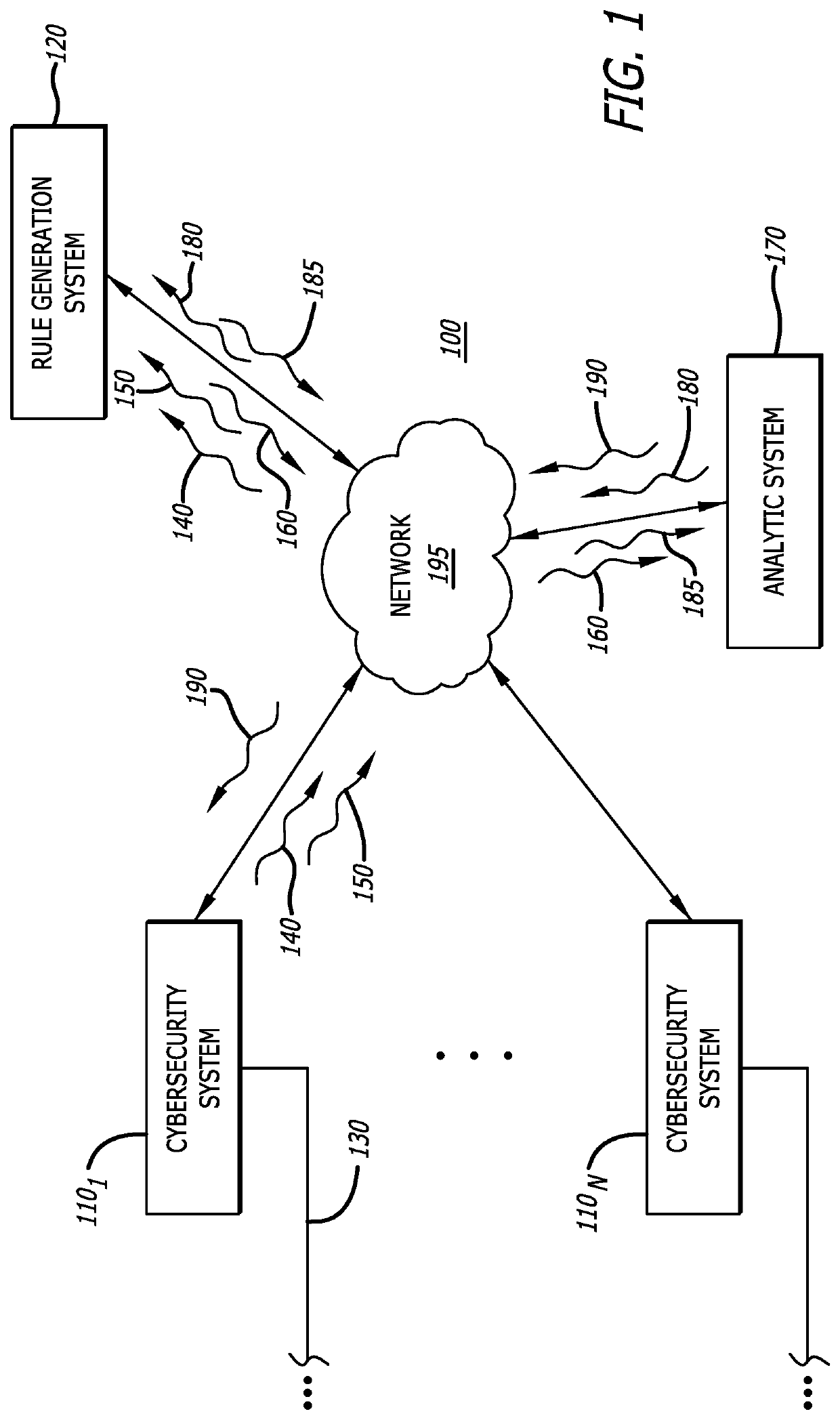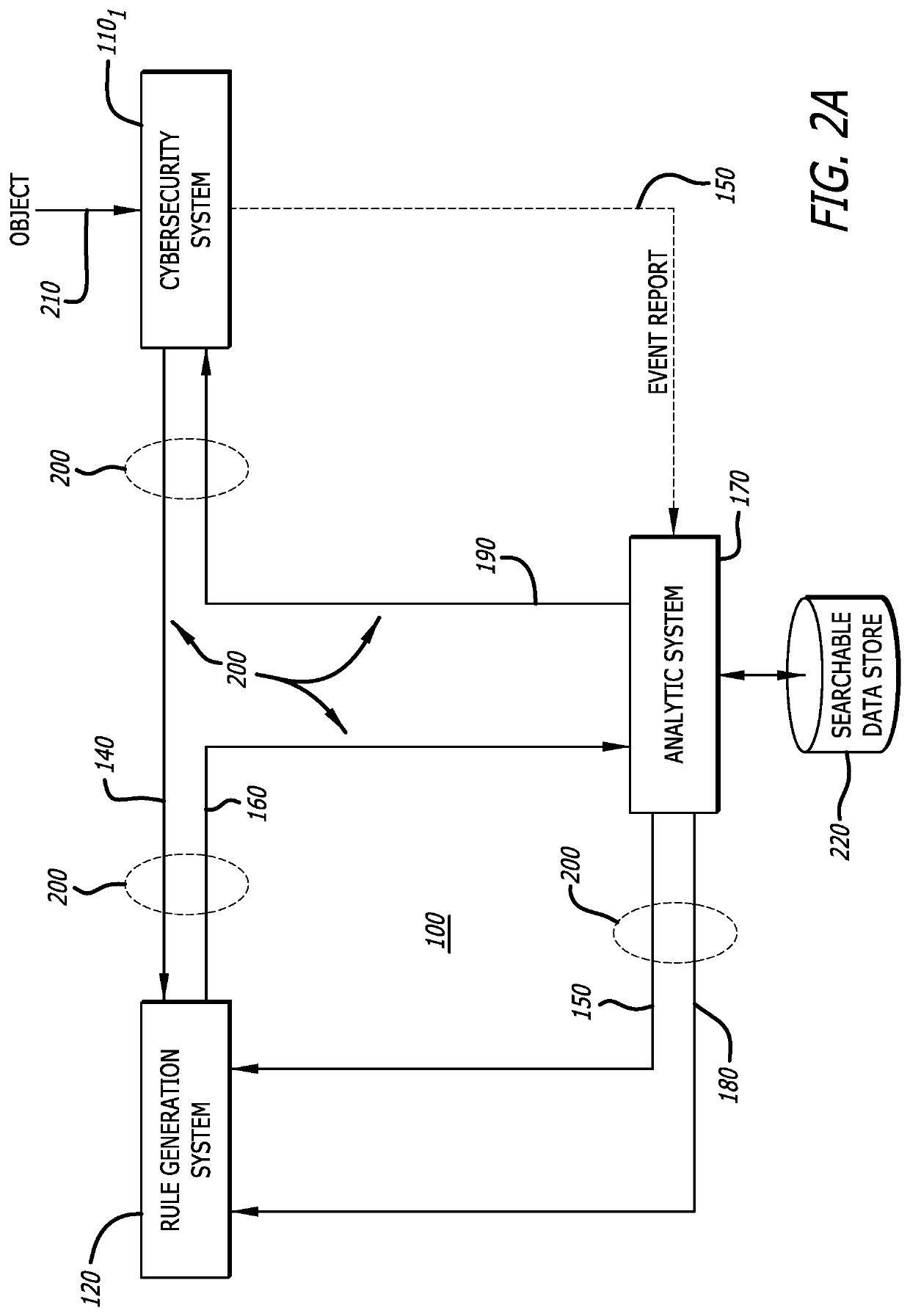System and method for automatically generating malware detection rule recommendations
a malware detection and automatic generation technology, applied in the field of cybersecurity, can solve the problems of increasing the number of cyberattacks being conducted on all types of network devices, high specialized and time-consuming tasks, and illicit (i.e., unauthorized) activities,
- Summary
- Abstract
- Description
- Claims
- Application Information
AI Technical Summary
Benefits of technology
Problems solved by technology
Method used
Image
Examples
Embodiment Construction
I. Overview
[0016]In general, one embodiment of the disclosure relates to a malware detection rule generation system that is designed to shorten the time duration currently needed to create efficacious malware detection rules in efforts to address the constantly changing threat landscape. For this embodiment of the disclosure, the rule generation system includes a receiver configured to receive meta-information associated with a plurality of events (e.g., monitored characteristics or behaviors) detected during malware analysis of an object by one or more cybersecurity systems (e.g., cybersecurity appliances and / or detection agents deployed on network devices). The received meta-information may be obtained from a log that maintains detected events based on operations performed by malware detection rules associated with dynamic analysis (e.g., isolated execution) as well as static analysis (object characteristics are analyzed without execution), correlation of detected events, and / or c...
PUM
 Login to View More
Login to View More Abstract
Description
Claims
Application Information
 Login to View More
Login to View More - R&D
- Intellectual Property
- Life Sciences
- Materials
- Tech Scout
- Unparalleled Data Quality
- Higher Quality Content
- 60% Fewer Hallucinations
Browse by: Latest US Patents, China's latest patents, Technical Efficacy Thesaurus, Application Domain, Technology Topic, Popular Technical Reports.
© 2025 PatSnap. All rights reserved.Legal|Privacy policy|Modern Slavery Act Transparency Statement|Sitemap|About US| Contact US: help@patsnap.com



